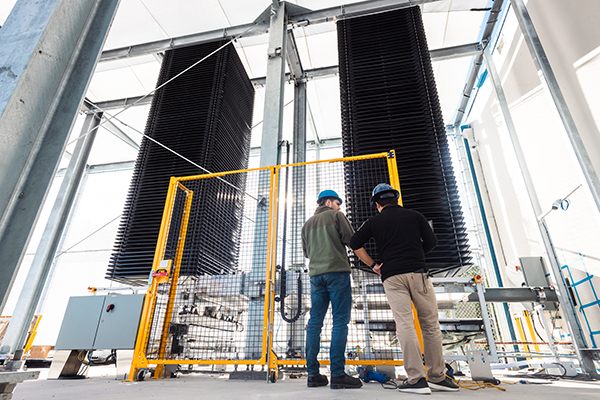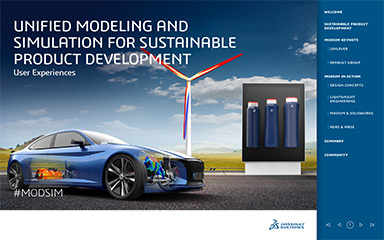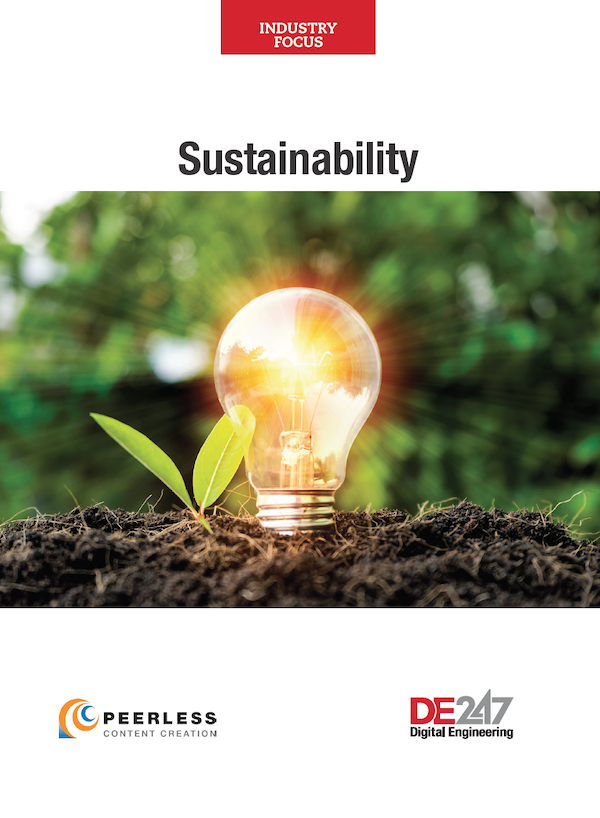
Heirloom, a company in the Autodesk Foundation’s Energy and Materials Portfolio, specializes in capturing carbon in limestones. Image courtesy of Heirloom.
Latest News
June 5, 2023
Frontier is part of a new sector, known as the carbon removal market. It's spawned by some leading firms' willingness to pay for carbon-removal operations, and some firms that specialize in removing carbon. The Energy Monitor site reports, “Earlier in April [2022], an alliance of Silicon Valley titans—including Meta, Shopify, Google and Stripe—announced they would be buying $925m of carbon removals over the next eight years through a new Stripe-owned company called Frontier.”
Carbon removal is one path to UN's goal of achieving net-zero carbon. “To keep global warming to no more than 1.5°C —as called for in the Paris Agreement —emissions need to be reduced by 45% by 2030 and reach net zero by 2050,” said UN. According to the IPCC (International Panel on Climate Change) report, “The systemic change required to achieve rapid and deep emissions reductions and transformative adaptation to climate change is unprecedented in terms of scale.”
This April, along with H&M Group, JPMorgan Chase, and Workday, Autodesk became part of Frontier's network. The announcement says, “The new members commit to purchase a combined $100M of permanent carbon removal by 2030.”
Ryan Macpherson, Climate Innovation and Investment Lead at Autodesk, said, “Autodesk is excited to join Frontier to help catalyze the development of carbon removal solutions globally. In addition to our commitment to purchase carbon removal, we’re making our design and make software available to Frontier’s portfolio to help them scale their operations.”
Under the Autodesk Technology Impact Program, nonprofits and startups using design for environmental or social good can apply for support from the company. Macpherson said, “We also make investments in different projects that decarbonize our own operations. In the areas where we can't actually decarbonize ourselves, we are going to use durable carbon offsets from Frontier and other partners.” Many of the firms developing carbon-removal operations are also using Autodesk software and services. “So we hope to help those companies grow and scale as well,” Macpherson said.
Trapping Carbon in Rocks
One of the carbon-removal companies is the Brisbane, California-based Heirloom, with operations to trap CO2 in limestone. The company is part of Autodesk Foundation's Energy & Materials Portfolio, a collection of nonprofits and startups developing design and engineering solutions that transform industries to be more sustainable, equitable, and resilient.
“Rocks are some of the planet's most vital carbon sinks. Over geological timescales, CO2 from the atmosphere binds to minerals and permanently turns to rock – a process known as carbon mineralization,” the company explains.
The method used by Heirloom is called Direct Air Capture (DAC). According to the International Energy Agency, “Direct air capture (DAC) technologies extract CO2 directly from the atmosphere. The CO2 can be permanently stored in deep geological formations, thereby achieving carbon dioxide removal (CDR). Benefits of DAC as a CDR option include high storage permanence when associated with geological storage and a limited land and water footprint.”
Heirloom is the first U.S. firm to use DAC, the company states. Maraym Nassar, Controls Engineer at Heirloom, says, “Our Brisbane-based facility is the only Direct Air Capture facility in the U.S. that is permanently storing CO2. Our technology rapidly accelerates the natural processes that enable limestone to absorb CO2 from the air from a timespan of years to days. It stands at 21 feet tall (about the height of an average giraffe) and holds hundreds of trays containing slaked lime that absorb CO2 from the atmosphere.”
Heirloom is on track to removing 1 billion tons of CO2 from the atmosphere by 2035, Nassar estimates. The resulting concrete with CO2 is then distributed to be used in building projects in the San Francisco Bay Area by Heirloom's partner CarbonCure.
Because CO2 transport creates emission, DAC plants should ideally be “colocated with CO2 transportation infrastructure or directly next to CO2 storage wells,” the company notes. The company's current site—Brisbane, California—doesn't quite fit this description, but Nassar says, “We’ve landed in Brisbane due to its proximity to technical talent as we continue to grow our team of engineers and carbon removal researchers. Looking ahead, our future deployments will be prioritized in areas near to permanent CO2 storage sites.”
Heirloom also conducts self-analysis to ensure its operations are not creating more emission than it removes. “We have an incredibly high net-negative ratio. A preliminary life cycle analysis of our facility shows that we permanently remove 97% of CO2,” says Nassar.
Paying for carbon removal is one way to reverse course to undo the environmental damage so far, but Macpherson cautioned, “It cannot be a replacement to the decarbonisation work required, like transition to low carbon energy sources and usage. The rewiring of our economy for decarbonization is already happening, driven partly by consumer pressure, investor pressure, and the legal environment.”
More Autodesk Coverage
Subscribe to our FREE magazine, FREE email newsletters or both!
Latest News
About the Author
Kenneth Wong is Digital Engineering’s resident blogger and senior editor. Email him at kennethwong@digitaleng.news or share your thoughts on this article at digitaleng.news/facebook.
Follow DERelated Topics







